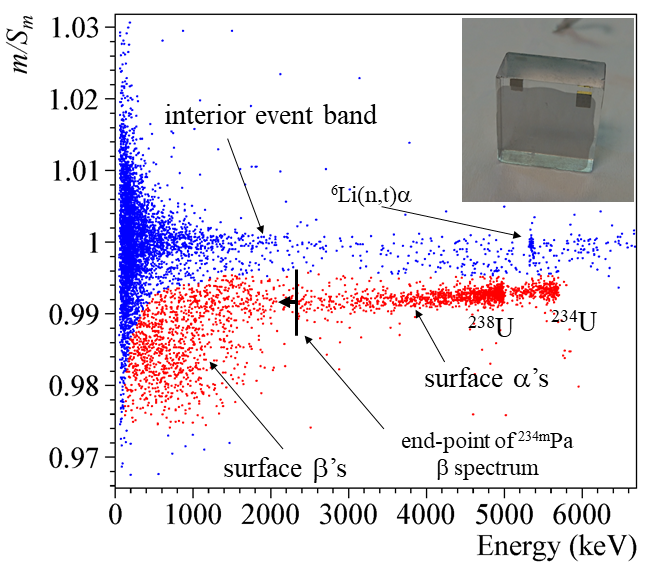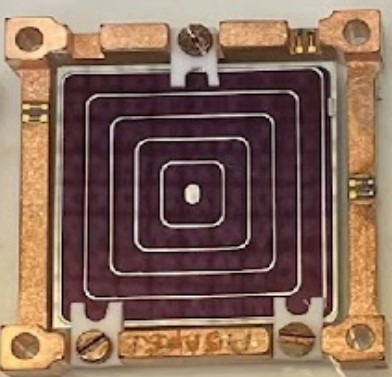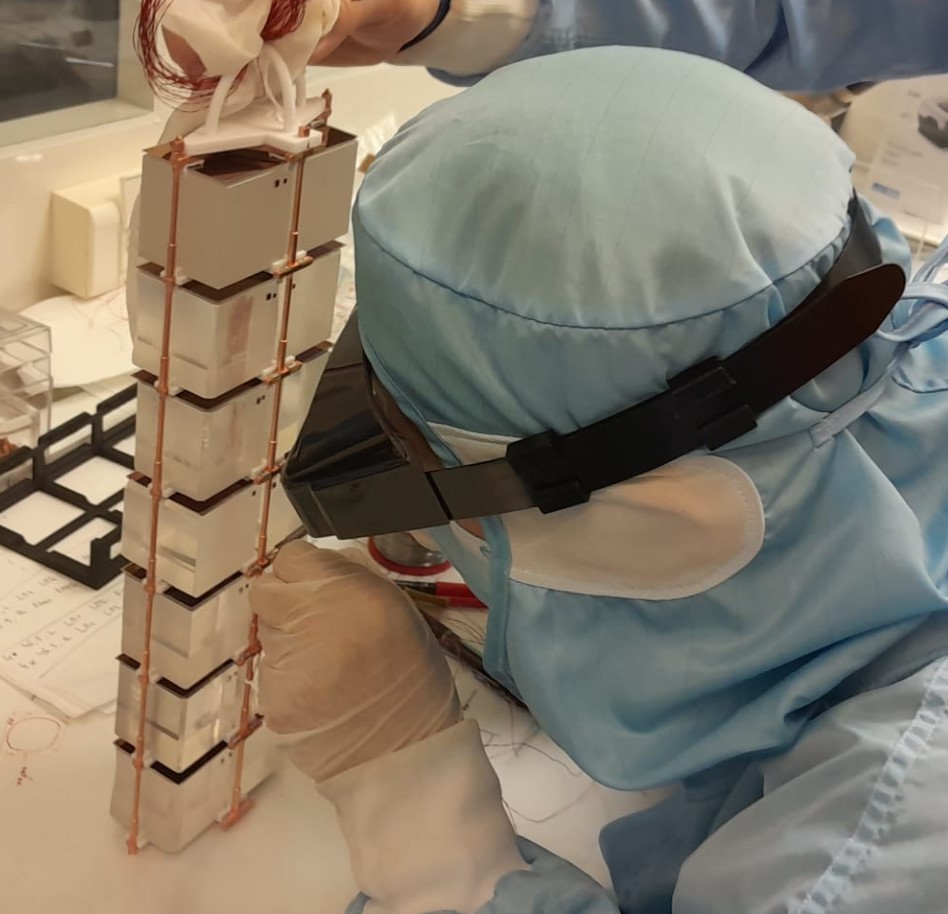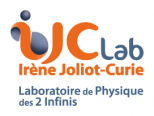The CROSS and CUPID experiments
CROSS is a double beta decay experiment funded by the European Commission as an ERC Advanced Grant (PI: Andrea Giuliani). The project duration is 2018 – 2024. After the fabrication and the commissioning of the CROSS demonstrator in 2024 – a pilot experiment using the CROSS methods – the data taking will continue for at least two years in the Canfranc underground laboratory in Spain, in order to achieve new physics results on neutrinoless double beta decay and other rare processes.
Neutrinoless double-beta decay is a key process in particle physics. Its experimental investigation is the only viable method that can establish the Majorana nature of neutrinos, providing at the same time a sensitive inclusive test of lepton number violation. CROSS (Cryogenic Rare-event Observatory with Surface Sensitivity) aims at developing and testing a new bolometric technology to be applied to future large-scale experiments searching for neutrinoless double-beta decay of the promising nuclei 100Mo and 130Te. The limiting factor in large-scale bolometric searches for this rare process is the background induced by surface radioactive contamination, as shown by the results of the CUORE experiment. The basic concept of CROSS consists of rejecting this challenging background component by pulse-shape discrimination, assisted by a proper coating of the faces of the crystal containing the isotope of interest and serving as energy absorber of the bolometric detector. Outstanding results were obtained on small Li2MoO4 and TeO2 crystals (12 and 24 g respectively), employed in prospect to look for double beta decay of the very promising isotopes 100Mo and 130Te. These results were achieved at IJCLab-Orsay, in the cryogenic facility managed by the ASSD group. The transfer of this technology to crystals of the final size for CROSS (280 g for Li2MoO4 and 550 g for TeO2) is ongoing.
Another technology developed in CROSS concerns light detectors. The experiment uses luminescent bolometers, detecting scintillation light in Li2MoO4 and mainly Cherenkov light in TeO2, in addition to the bolometric heat signal (dual readout). This approach leads to a rejection of the alpha background by light yield cuts. In CROSS we are developing advanced light detectors based on the Neganov-Trofimov-Luke effect that can amplify by an order of magnitude the signal-to-noise ratio. This improvement is essential to reject the background induced by random coincidence of events from the ordinary two-neutrino double beta decay in Li2MoO4 and to detect the feeble luminescence of TeO2.
CROSS is based on phonon-mediated particle detectors consisting of single crystals as energy absorbers and operated at millikelvin temperatures. In general, these devices are not sensitive to the particle impact point, especially if the detection is mediated by thermal phonons. In a series of small-scale experiments performed at IJCLab, we have demonstrated that excellent discrimination between interior and surface beta and alpha events can be achieved by coating a crystal face with a thin metallic film, either continuous or in the form of a grid, according to the CROSS technology. The coating affects the phonon energy down-conversion cascade that follows the particle interaction, leading to a modified signal shape for close-to-film events. An efficient identification of surface events was demonstrated with detectors based on a rectangular 20×20×10 mm3 Li2MoO4 crystal coated with a Pd normal-metal film (10 nm thick) and with Al–Pd superconductive bi-layers (100 nm-10 nm thick) on a 20 × 20 mm2 face. Discrimination capabilities were tested with 238U sources emitting both alpha and beta particles. Surface events are identified for energy depositions down to millimeter-scale depths from the coated surface. With this technology, a substantial reduction of the background level can be achieved in experiments searching for neutrinoless double-beta decay.
Tests are ongoing to achieve the same discrimination capability on large crystals, with volumes of 45×45×45 mm3.

Particle identification obtained by a 12 g Li2MoO4 detector with a 10-nm-thick Pd coating exposed to a uranium source. Interior and surface events can be separated by using a special pulse shape parameter, defined as m/Sm. In the graph, m/Sm is plotted as a function of the heat energy (estimated by Sm) deposited in the Li2MoO4 crystal, with a γ-based calibration. Surface events, highlighted in red, appear as a population with lower m/Sm values, while this parameter is normalized to 1 for interior events. The uranium source has an α (238U and 234U) and a β (234mPa) component. Both give rise to surface events as the source is external. The detector is capable to separate the source surface events from the predominantly interior events of the background. The neutron-capture line from the reaction 6Li(n,t)α lays, as expected, in the interior-event band. The α particles are mis-calibrated by about 20% due to both pulse-shape effects and intrinsic different responses for α’s and β/γ’s.
In addition to the surfaces-sensitivity mechanism, CROSS detectors will be provided with optical bolometers to detect the light emitted in coincidence with the heat signal measured in the crystals. These light detectors consist of thin Ge wafers equipped with a Ge thermistor as temperature sensors, similar to that used in the main crystal. The collected light is detected as a temperature pulse in the wafer.
The primary function of the double heat-light readout is the rejection of the alpha background by exploiting the lower light yield of alphas with respect to betas/gammas for the same deposited energy. Besides this, the light detector can play a crucial role also to mitigate the pile-up background, since its signal rise-time is about ten time shorter than that of the heat signal. In order for this method to be effective, the signal-to-noise ratio needs to be enhanced, which can be obtained through the so-called Neganov–Trofimov–Luke effect: an electric field is established in the wafer thanks to a set of deposited electrodes, and the charges liberated by the impinging radiation drift under the action of the field producing additional heat, that is detected by the thermistor.
Substantial improvements of the signal-to-noise ratio, typically by one order of magnitude or more, have been obtained by this method.

A light detector enhanced by the Trofimov-Neganov-Luke mode. The light detector consists of a pure Ge wafer, with an area of 45x45 mm and 0.2 mm thick. The concentric square electrodes are connected by ultrasonic bonding with an alternate pattern, so as to form two equipotential sets. A voltage of 50-100 V, applied between these two sets, appears therefore across two nearby electrodes. The electron-hole pairs freed by an ionizing event (like a scintillation light flash) drift towards the electrodes and produce additional heat, that is measured as a temperature rise by the thermistor visible on the left edge of the wafer in the upper part.
Deetector prototypes are developed and tested in Orsay. Large arrays of these devices are then tested in the Canfranc underground laboratory, where the low-background CROSS cryogenic facility is located.
Detectors are arranged in towers that host both the main crystals and the light detectors. Performance and background levels are tested in long runs with durations of the order of several months.
The CROSS demonstrator will be assembled and operated in 2024. According to the current provisional scheme, it will consist of 32 Li2MoO4 crystals enriched in 100Mo, 4 Li2MoO4 crystals with natural isotopic composition and 6 TeO2 crystals enriched in 130Te, for a total of 42 crystals.
All the crystals will have a size of 45×45×45 mm3 and will be coupled to square 45×45 mm2 light detectors. The light detectors will be all operated in the Neganov-Trofimov-Luke mode. As many crystals as possible will use the surface event rejection methods developed in the CROSS R&D activity.
The 42 crystals will be arranged in 3 towers of 14 crystals each (each tower will comprise 7 floors with 2 detectors per floor). Considering the molybdenum section of the demonstrator, the total 100Mo mass will be of 4.7 kg. It is possible that additional 2 kg will be provided by installing also the detectors of the CUPID-Mo experiment, now stopped.
The Mo section of the CROSS demonstrator will be not only a technology validator but also a very sensitive neutrinoless double beta decay experiment.

A CROSS operator is verifying the electrical contacts on a tower of 14 CROSS detectors, identical to one of the three that will compose the CROSS demonstrator. The tower has just been assembled in the clean room of the group ASSD in the building 104. The two top detectors are based on TeO2 crystals, enriched at 90% level in the 130Te double beta decay isotope. The remaining detectors are based on Li2MoO4 crystals, enriched at 95% level in the 100Mo double beta decay isotope. The light detectors are visible as thin dark layers interleaved with the crystals. The Neganov-Trofimov-Luke electrodes are hidden as they face the crystals.
The CROSS detectors will also provide a test bench for CUPID, a next-generation double beta decay experiment based on Li2MoO4.
The detector mechanical structure, the readout electronics, the study of the intrinsic radioactivity of the Li2MoO4 crystals, the performance of the bolometers and the optimization of the Neganov-Trofimov-Luke light detectors are all elements of great interest for CUPID. The CROSS facility in Canfranc is also a CUPID test facility.
The CROSS collaboration is led by the ASSD team and the cryogenic detector team at IJCLab.
Other laboratories participating to CROSS are:
- CEA-IRFU-Saclay (France)
- LSC-Canfranc (Spain)
- INR-Kjiv (Ukraine)
- INFN-Milano Bicocca/Rome La Sapienza/Gran Sasso (Italy)
- ITEP-Moscow (Russia)
- NIIC Novosibirsk (Russia)
- University of Zaragoza (Spain)
- University of South Carolina (USA)
The leadership of the CROSS experiment condemns the military invasion of Ukraine by the Russian Federation and deplores the tragic loss of life and the humanitarian impact of the war.
Ukraine is a member of CROSS, and Ukrainian scientists are valued and active members of the collaboration. CROSS will continue to uphold the value of scientific collaboration across borders, including our collaboration with scientists in the Russian Federation, as a driver for peace and for the benefit of all humanity.
The CROSS leadership shares the sentiments expressed by the French Physics Society, the American Physical Society and INFN (Italy) in response to the war in Ukraine.
French Physics Society
https://www.sfpnet.fr/positionnement-de-la-sfp-contre-la-guerre-en-ukraine
APS Response to the Russian Invasion of Ukraine
https://aps.org/about/governance/letters/ukraine.cfm#condemn
INFN Statement on Ukraine
https://home.infn.it/en/press-releases/press-release-2021/4725-per-l-ucraina-2










